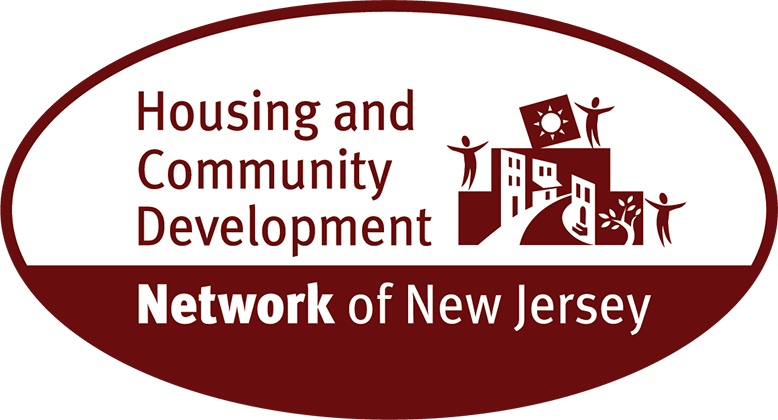| Study says more than 3 million live in 'true poverty' in NJ. Most go uncounted |
|
Published July 11, 2021 By federal standards, a single working parent with two children in New Jersey could survive on just under $21,000 in 2019. Researchers from Legal Services of New Jersey's Poverty Research Institute suggest in a new report that's way off the mark — such that the government undercounts the number of poor in the state by more than 2 million. How much would the theoretical parent-and-two-children household need to make it in New Jersey? More than three times the $20,600 benchmark set by the federal government, according to the "A Real Cost of Living" Report Series. "Anyone living in New Jersey knows that's not accurate," Shivi Prasad, director of the Poverty Research Institute and one of the report authors, said of the federal government's so-called "poverty line." "The key thing to really talk about whenever you want to address something or fix something is, the first thing you need to do is acknowledge the problem," Prasad said. The indicators used by the federal government to set the poverty line don't take into account the high cost of living in a state like New Jersey, according to the researchers. Annual rent for a two-bedroom apartment in New Jersey averaged $17,316 in 2019 — about $1,450 a month — consuming nearly 85% of the poverty-level family's $20,598 in wages. They would be left with $3,275 annually, or $273 a month, to meet other essential needs like food, transportation, health care and taxes, according to the researchers. The group says the federal government relies on an antiquated equation that places a one-size-fits-all poverty threshold on residents across the country. The report calls for establishing a New Jersey-specific formula for calculating baseline poverty — what a family would need in order to afford basic necessities. Under its calculations, the "true poverty" line for a family of three is more like $70,372. By this measure, based on 2019 U.S. Census figures, nearly 3 million New Jersey residents live in poverty, up from the 800,000 counted by the federal government that year. A more accurate accounting could have implications in the way federal aid is allocated, and how public policies surrounding housing affordability and assistance are developed. Prasad said researchers hope the study "makes enough noise" to create momentum for a revised poverty measure and offers legislators a guide for policy improvements to help fill the gap until that is done. Impact of a low poverty line Amanda Devecka-Rinear, who leads a nonprofit formed in response to superstorm Sandy, said many of the residents that the New Jersey Organizing Project assists are people on the brink of needing government assistance — but who don't yet qualify. "Largely when you look at our membership, it's people who have multiple jobs but are struggling to make ends meet," she said. "Or a lot of them end up in situations where they're maybe doing OK, but then something like Sandy happens, or then COVID. They're in a population that often gets left out of help, but they need it." Researchers from the study said without an accurate portrayal of need across the state, public policy decisions are bound to fall short. Another impact may be in how federal funding for aid programs is disbursed. Arnold Cohen, a senior policy adviser with the Housing and Community Development Network of New Jersey, said the study's figures were unsurprising. Cohen said New Jersey legislators already have recognized that the federal poverty rate is "an absurd number" when considering the cost of living across the state. He said policy advocates and legislators alike have made efforts to adjust assistance programs to reach a larger portion of the population, like recent $500 tax rebates and the expansion of tuition-free education for all four years of college for students from families earning less than $65,000. But a further barrier comes when trying to get the federal government to recognize that number. Cohen said if the true poverty level were accepted, a larger percentage of the New Jersey population would be considered in poverty — leading to a fairer share of federal aid as a whole. "If we look at the true poverty rate in New Jersey, we would be getting more federal assistance," Cohen said. "The money coming into New Jersey should reflect that high cost of living." How is poverty calculated? The formula is based off of a 1955 consumption survey that showed most families spent about one-third of their total income on food. Government officials took the U.S. Department of Agriculture's "economy food" budget and multiplied it by three to show the total income a person needs to cover basic necessities. That number became the federal poverty level, or the poverty line, which is adjusted annually for inflation. The amount varies depending on household size, but is applied universally across all 48 contiguous states. Federal assistance programs like emergency cash assistance, food stamps and child care subsidies use the poverty line to determine income requirements for aid. In 2019, the federal poverty level for a single adult was $13,300. For a single parent with two children, it was $20,598, and for a family of five with two adults and three children, it was $30,510. But researchers from the Poverty Research Institute argue the federal poverty level formula is flawed because it doesn't account for regional differences in the cost of living or historical changes in what expenses consume most of a family's budget. New Jersey has the third-highest cost of living in the country, with some of the highest expenditures in growing housing, food and health care costs. But the federal formula assumes the cost of living is the same in Mississippi as in New Jersey. Using the example of housing costs for the family of three, the report showed the average rent for a New Jersey two-bedroom apartment in 1960 was $888 — or 33% of the federal poverty level of $2,654 that year. In 2019, the $17,316 average rent would consume 84% of the income of a family living at the federal poverty line of $20,598 — showing that adjustments for inflation have not kept up with true costs, or how the burden of certain expenses have changed, the report argues. And as more families become dual-income households, researchers say the federal formula also ignores increasing costs of transportation and child care. Reevaluating true poverty Costs for each category are combined to determine the true income needed to "get by," the study said, without experiencing deprivation, making trade-offs between expenses, or relying on public or private support. It doesn't account for other expenses considered staples of the middle class: Retirement savings, internet or cable bills, or the cost of dining out. Similar calculations under a model known as the self-sufficiency standard have been done in 41 states. Researchers call the formula "what it takes to survive beyond true poverty or deprivation in the Garden State." In 2019, that meant a single adult needed an income of $31,995. The family of three needed to make more than $70,372 to escape poverty. And the family of five needed $99,112 to get by — more than three times the federal poverty level. About one-third of the state fell below those thresholds, compared to the 9% of households recognized in poverty in the 2019 U.S. Census, the report found. Researchers said the study illuminated the need for several policy changes, including a stronger minimum wage. Even after the minimum wage increased to $10 in 2019, the study said the family of three with a single working parent would need to work 3.38 full-time minimum wage jobs to earn an income above the true poverty level. A five-person family with two working adults would each need 2.38 full-time minimum wage jobs to afford basic necessities. And the maximum limits a family can collect from federal aid programs like Supplemental Nutrition Assistance Program (SNAP) or Temporary Assistance to Needy Families (TANF) supply less than 20% of the income needed for a family of any size to stay above the true poverty line. Who is eligible for that federal aid is also pulled into question. Many public assistance programs use the federal poverty level to determine eligibility. The income limit to qualify for SNAP benefits is typically 130% of the federal poverty level, or $2,230 monthly for the family of three in 2019. Using the true poverty level, a family of three earning less than $7,623 per month would qualify. Researchers from the study said a misrepresented poverty line results in a "gaping hole in assistance where it is needed most." Legal Services of New Jersey President Dawn K. Miller said the study "clearly puts into sharp and revealing focus the real depth and breadth of deprivation for so many people living in our state, even when they are working, sometimes multiple jobs, but still remain unable to afford the most basic needs to survive." Kayla Canne covers housing disparity along the Jersey Shore. Her work is funded in part by Report for America, an initiative of The GroundTruth Project. She is a proud Returned Peace Corps Volunteer, and beyond journalism, she enjoys playing creatively with pottery and batik. Get in touch at [email protected] or on Twitter @kaylacanne. |














